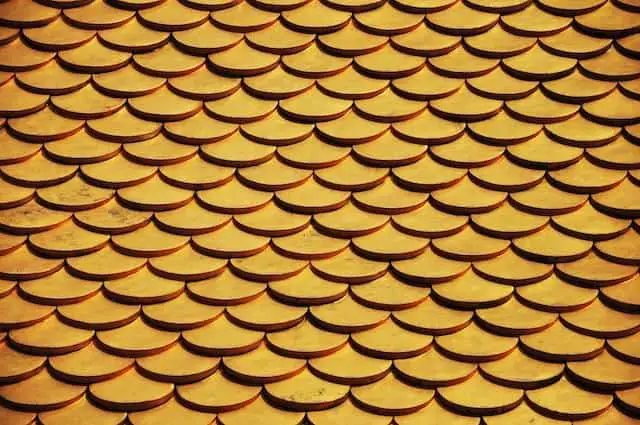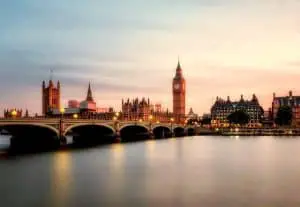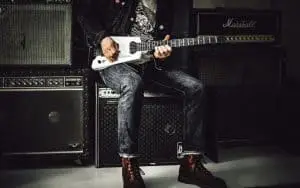Imagine yourself in the ’20s, a period of remarkable progress and invention. Fashion trends in the 1920s and 1930s were no exception, as they marked an era of liberation for women’s clothing styles.
The late 1920s saw a shift from previous decades’ fashion norms, with designers like Coco Chanel introducing iconic pieces that would forever alter the landscape of women’s attire. In this blog post, we will explore various aspects of these transformative years by delving into topics such as Art Deco influences on design, Mademoiselle Chanel’s impact on fashion trends in the 1920s and 1930s, dramatic beauty looks inspired by silent film stars like Gloria Swanson, and more.
Join us on this journey through time to discover how flappers redefined feminine ideals with their daring choices in evening wear; learn about accessories that added glamour to outfits; uncover Saks Fifth Avenue’s role in luxury retail growth during these decades; and even find out how sewing became a means for everyday people to access high-fashion trends.
We’ll also touch upon men’s fashion changes during this period and discuss children’s adaptations throughout these decades – all while celebrating the creativity and spirit that defined an unforgettable era.
Table of Contents:
- The Art Deco Influence on Women’s Fashion
- Mademoiselle Chanel’s Impact on Fashion Trends
- Flappers Redefining Feminine Ideals
- Accessories Adding Glamour to Outfits
- Saks Fifth Avenue and the Growth of Luxury Retail
- Sewing as a Means to Access Fashion Trends
- The Evolution of Women’s Everyday Attire
- Men’s Fashion Changes During This Era
- Children’s Fashion Adaptations Throughout the Late 1920s and 1930s
- Conclusion
The Art Deco Influence on Women’s Fashion
Let’s explore the extravagance of the late 1920s and 1930s through Art Deco fashion.
The Twenties roared with a fashion fervor that was unparalleled, and Art Deco styling became the vogue for women’s garments.
Are you ready to explore?
Intricate Detailing in Clothing Items
Fashion designers embraced Art Deco patterns, creating evening dresses and everyday wear that featured geometric shapes and lavish embellishments. Even fur accessories were adorned with Art Deco designs. Remember Gloria Swanson’s iconic style?
Rising Hemlines as a Sign of Change
Hemlines rose dramatically during this era, reflecting societal changes and newfound freedom for women after World War I. The flapper era brought about chemise dresses that were shorter and more revealing than the previous decades. It was a time of liberation and women’s fashion reflected that.
Beyond dresses, bathing costumes were redesigned with more daring cuts while cloche hats became all the rage – completing any fashionable ensemble of the time.
Mademoiselle Chanel’s Impact on Fashion Trends
Let’s discuss the game-changing impact of Mademoiselle Chanel on fashion trends.
Coco Chanel, the iconic fashion visionary who stirred up a revolution in women’s style during the 1920s and ’30s.
How did she do it?
The Introduction of the Little Black Dress
In 1926, Coco introduced us to an iconic wardrobe staple: the Little Black Dress (LBD).
This simple yet elegant garment became synonymous with sophistication and versatility.
Launching Pants for Women
But wait, there’s more.
Coco Chanel also defied gender norms by launching pants for women – a groundbreaking move at that time.
Gone were the days when skirts and dresses were our only options.
Mademoiselle Chanel’s impact on fashion trends was immense. Her immense influence on the world of fashion has been long-lasting, with her iconic designs still inspiring designers in the present day.
During the Roaring Twenties, fashion was a craze, and the flapper era was in full swing. Women’s fashion was changing rapidly, and Coco Chanel was at the forefront of this revolution.
She introduced the robe de style, a dress that was fitted at the waist and had a full skirt, which was a departure from the straight, shapeless dresses of previous decades.
She also popularized evening dresses and evening wear, including chemise dresses and bathing costumes. Her designs were often adorned with fur accessories, which were all the rage during the Art Deco and Art Nouveau periods.
During World War I, Coco Chanel designed practical clothing for women who were working in factories and doing other jobs traditionally done by men. This was a turning point in women’s fashion, as it showed that women could be both fashionable and practical.
One of her most famous clients was Gloria Swanson, who wore Chanel’s designs in the film “Male and Female.” Swanson’s character wore a cloche hat, which became a popular accessory during the 1920s.
As you can see, Mademoiselle Chanel’s impact on fashion trends was immense. Mademoiselle Chanel’s influence on the world of fashion was undeniable, her creative vision altering how we perceive style. Her legacy lives on today, and we can all learn from her innovative spirit.
Coco Chanel was a game-changer in the fashion world during the 1920s and 1930s, introducing iconic wardrobe staples such as the Little Black Dress and pants for women. Her impact on fashion trends was immense, revolutionizing women’s fashion by defying gender norms and creating practical yet fashionable clothing.
Dramatic Beauty Looks of the Era
Let’s talk about makeup, darling.
The late 1920s and 1930s brought a whole new level of glamour to women’s beauty routines, with dramatic looks inspired by silent film stars like Gloria Swanson.
Are you prepped for your spotlight moment?
Thin Eyebrows and Dark Lips Trend
In this era, thin was in – at least when it came to eyebrows.
Ladies plucked their brows into delicate arches that framed their eyes perfectly.
Moving on to the piece de resistance: those sultry dark lips.
Create a pointy cupid’s bow shape using deep red or plum lipstick shades for an authentic vintage look.
Inspiration from Silent Film Stars
Silent film sirens were the ultimate style icons during these decades, influencing not only fashion but also beauty trends.
The Roaring Twenties and the Flapper Era brought a fashion craze that was a departure from the previous decades, and the beauty trends followed suit.
Evening dresses and evening wear were adorned with fur accessories, and chemise dresses were all the rage.
Bathing costumes were also popular, and the iconic cloche hats were a must-have accessory.
The Art Deco and Nouveau movements had an impact on the fashion and beauty of the era.
Despite the World War, fashion designers continued to innovate, and the robe de style was introduced by Jeanne Lanvin in 1920.
So, channel your inner silent film star and embrace the beauty trends of the 1920s and 1930s.
Flappers Redefining Feminine Ideals
As the Roaring Twenties continued, a new type of woman emerged – the flappers.
These daring ladies defied societal norms by wearing shift-style drop dresses, cutting their hair short, and embracing their newfound independence. Fashion designers of the time, such as Robe de Style, created dresses that were shorter and looser than those of previous decades, allowing women to move more freely and dance the night away.
The flapper era was a fashion craze that saw the rise of art deco and art nouveau styles, as well as the popularity of cloche hats and fur accessories. Women also began to wear evening dresses and evening wear that were more revealing than ever before, with chemise dresses becoming a popular choice for formal occasions.
Even bathing costumes were affected by the flapper trend, with women opting for shorter hemlines and more form-fitting designs. The world was changing rapidly, with the aftermath of World War I and the rise of Hollywood stars like Gloria Swanson influencing fashion trends.
Accessories Adding Glamour to Outfits
Let’s talk about the power of accessories.
In the Art Deco era, accessories such as beaded bags and feather boas added a luxurious touch to any outfit.
Art Deco fashion was all about opulence, so it’s no surprise that beaded bags and feather boas were among the must-have items for stylish women during this era.
Beaded Bags & Feather Boas
The intricacy of beaded bags added an elegant touch to any outfit, while feather boas provided a dramatic flair perfect for evening wear or even daytime events if you dared.
Embellished Headbands
Cloche hats may have been popular headwear during this time, but let’s not forget about embellished headbands – another iconic accessory inspired by the fashion trends of the roaring twenties and thirties.
Gloria Swanson, one of Hollywood’s biggest stars at that time, often donned stunning headpieces, making them an essential part of every fashionable woman’s wardrobe.
Fur accessories also made their mark as they exuded luxury and sophistication when paired with evening dresses or coats – think fur stoles draped over shoulders or fur-trimmed gloves adding warmth and glamour to any ensemble.
And let’s not forget about the fashion designers who created the iconic robe de style dress, which was a popular alternative to the straight, shapeless chemise dresses of previous decades. The robe de style featured a fitted bodice and a full skirt, often embellished with lace or embroidery.
Incorporating these fabulous accessories into your wardrobe can truly elevate your style and transport you back to the opulent Art Deco era of fashion. For those seeking to evoke the flapper style or Hollywood’s golden age of glamour, these items can make a huge impact on any ensemble.
Accessories such as beaded bags, feather boas, embellished headbands and fur accessories were must-haves for stylish women in the 1920s and 1930s. These little gems transformed outfits from ordinary to extraordinary during the opulent Art Deco era of fashion. Incorporating these fabulous accessories into your wardrobe can truly elevate your style and transport you back to that glamorous time period.
Saks Fifth Avenue and the Growth of Luxury Retail
Imagine this: it’s the 1920s, and you’re a fashionable socialite on the hunt for the latest trends. Where do you go? Saks Fifth Avenue, of course. This luxury retail giant first opened its doors in 1867 but truly blossomed during the late 1920s and 1930s.
Serving as a mecca for fashion enthusiasts, Saks became synonymous with opulence, offering an extensive range of designer clothing, evening wear, fur accessories, and cloche hats – you name it. The Roaring Twenties saw rapid growth for Saks Fifth Avenue as they catered to stylish clientele seeking glamorous ensembles by renowned fashion designers like Coco Chanel or Gloria Swanson.
- Fashion craze? Check.
- Bathing costumes? Double-check.
- Luxurious chemise dresses? Triple-check.
Fashion trends in this period were heavily impacted by the preceding eras, such as Art Nouveau and Deco. The flapper era was also in full swing, with evening dresses and robe de style gowns becoming increasingly popular. And let’s not forget about the iconic cloche hats that were all the rage.
But it wasn’t just about the clothes – Saks Fifth Avenue also offered a wide range of fur accessories, which were a staple of the era. And with the rise of beach culture, bathing costumes became a must-have item for any fashion-forward woman.
In spite of the struggles posed by global conflict, Saks Fifth Avenue kept on prospering, broadening their selection and affirming their standing as a premier shopping destination. Today, they remain a go-to for anyone looking to indulge in a little luxury.
Sewing as a Means to Access Fashion Trends
So, you’re passionate about fashion but can’t afford those luxury brands?
No worries. Sewing one’s own garments was a widespread way for many folks in the late 1920s and ’30s to get their hands on the trendiest styles without spending too much.
Let’s explore how this DIY approach made fashion more accessible and customizable during these decades.
DIY Clothing Adaptations
Sewing allowed individuals to copy styles from their favorite fashion designers, while also adding personal touches that suited their tastes and preferences.
This meant they could still rock that flapper era look or wear an evening dress inspired by Gloria Swanson without spending a fortune.
Making Fashion More Accessible
The ability to sew one’s own garments opened up fashion trends like robe de style dresses, chemise dresses, cloche hats, fur accessories, and bathing costumes to a wider audience than ever before.
In fact, sewing patterns were often published in magazines so everyone could create their version of fashionable outfits seen on celebrities or socialites of the time.
The Evolution of Women’s Everyday Attire
Let’s examine how the fashion trends of the late 1920s and 1930s enabled women to embrace a more practical style for their active lifestyles.
During this time, the female silhouette was loose, straight, and slender with dropped waists and shorter hemlines. This shift in style represented an era where women embraced more practical attire to accommodate their increasingly active lifestyles. Fashion designers played a significant role in these changes.
Sailor-Inspired “Middy” Style Blouses
Ahoy there. Sailor-inspired “middy” style blouses were all the rage among women of various ages and social classes. Their popularity stemmed from their comfortable fit while still maintaining an air of sophistication – perfect for daytime wear.
Menswear-Inspired Button-Down Shirts
Breaking gender norms never looked so chic. Women began wearing button-down shirts, taking inspiration from men’s attire, as a way to express their newfound freedom in the 1920s. This was another nod to the Roaring Twenties’ spirit of liberation.
Fancy Dresses for Special Occasions
All dressed up with somewhere to go? Evening dresses remained elaborate for special occasions. Think glitzy embellishments, fur accessories, and intricate patterns that reflected the opulence of Art Deco design.
Pioneering Pantsuits
Coco Chanel wasn’t just about Little Black Dresses. She also launched pants for women, defying gender norms and making a bold statement in the world of fashion.
So there you have it. A glimpse into the fascinating evolution of women’s everyday attire during the Art Deco era. Discover more about this iconic period and how it shaped today’s fashion trends.
Men’s Fashion Changes During This Era
In the late 1920s and 1930s, men’s fashion experienced a shift towards looser and wider styles. This was quite different from previous decades when attire leaned more towards form-fitting designs.
The seasonal transition to lighter fabrics and colors reflected a departure from the darker, heavier materials used previously for winter clothing items.
Wider and Looser Suit Designs
The evolution of men’s suits saw an increase in width across various elements such as lapels, ties, and trousers – giving them a more relaxed appearance overall.
Lighter Colors and Materials for Summer Wear
Gone were the days of dark woolen suits all year round. Instead, men embraced lighter shades like cream or beige alongside breathable materials like linen during warmer months – keeping them cool while still looking dapper at any occasion.
- Tracing fashion trends through history can provide an understanding of how they have influenced the clothing choices we make today.
- So next time you’re rocking that vintage-inspired outfit or admiring art deco patterns on your favorite accessory – remember where it all began.
Children’s Fashion Adaptations Throughout the Late 1920s and 1930s
Let’s time-travel to examine how children’s fashion developed during the late 1920s and 1930s.
In those days, boys and girls typically wore white gowns, which eventually transitioned into short pants for little boys as they grew older.
Subheader: White Gowns Transitioning to Short Pants
The shift from white gowns to short pants was not only practical but also marked a significant change in societal norms surrounding gender-specific clothing trends.
- Youthful innocence: The white gown symbolized purity and simplicity, making it an ideal choice for young children at that time.
- Moving towards practicality: As kids became more active, shorter pants allowed them greater freedom of movement while maintaining modesty standards.
Subheader: Gender-Specific Clothing Trends
This era saw both genders adopting similar trends seen in adult counterparts. Young ladies began wearing dresses or skirts while male youth donned trousers and jackets – reflecting their parents’ styles.
Gloria Swanson, one of the most prominent actresses of this period, even dressed her daughter in matching outfits with herself.
If you’re passionate about vintage fashion or simply curious about how children dressed back then, exploring these historical styles can be quite fascinating.
Conclusion
Fashion Trends in the 1920s and 1930s were revolutionary, as they marked a significant shift from traditional clothing styles to modern and bold fashion choices. The Art Deco influence on women’s fashion was apparent with intricate detailing in clothing items and rising hemlines that signified change.
The impact of Mademoiselle Chanel on fashion trends cannot be overstated, as she introduced the Little Black Dress and pants for women. The era also saw dramatic beauty looks inspired by silent film stars, with flappers redefining feminine ideals through shorter haircuts that symbolized independence. High-end shopping destinations like Saks Fifth Avenue expanded during the period, and sewing became a means to access fashion trends. Men’s wider and looser suit designs were introduced for comfortability, and lighter colors and materials were used for summer wear. Children’s gender-specific clothing trends also evolved throughout these decades.







